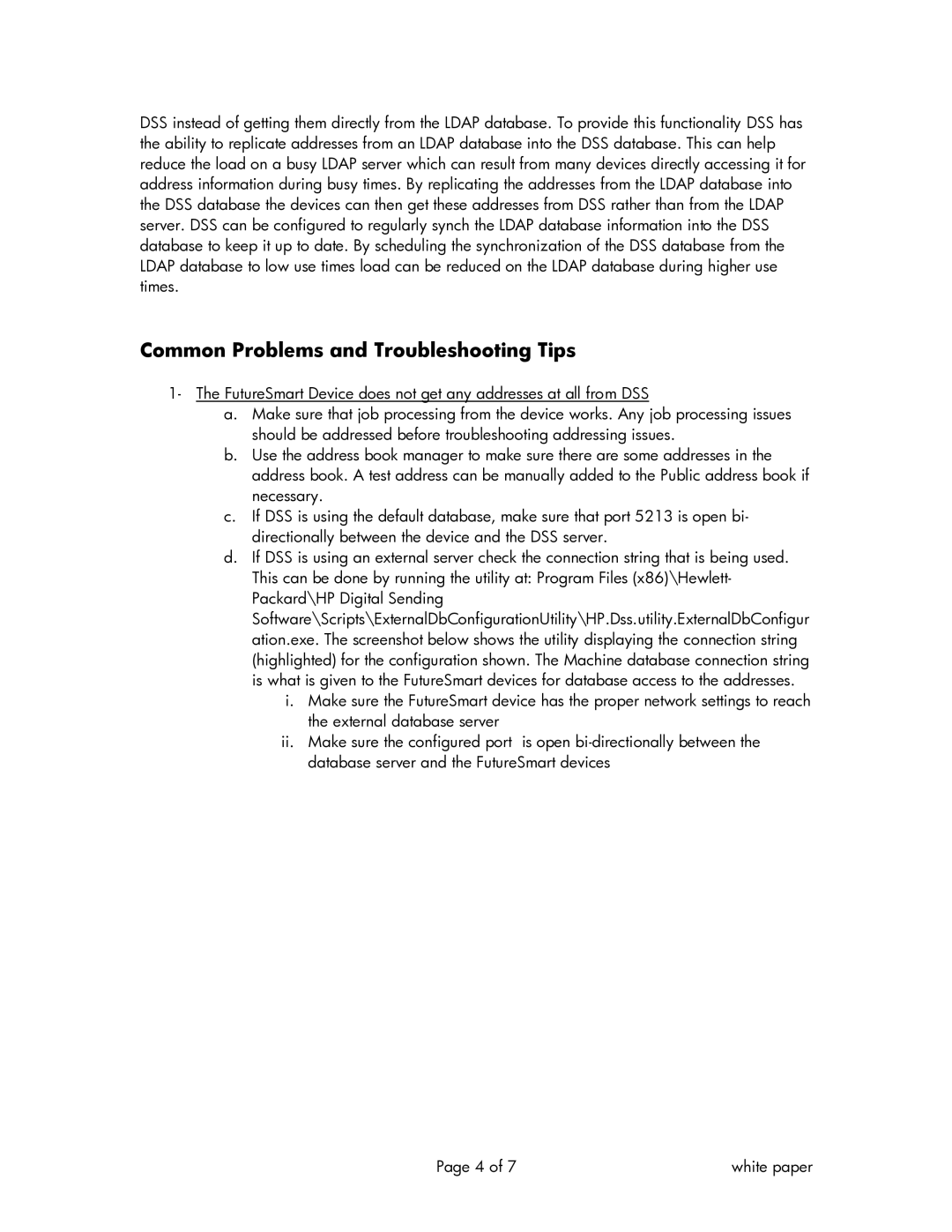DSS instead of getting them directly from the LDAP database. To provide this functionality DSS has the ability to replicate addresses from an LDAP database into the DSS database. This can help reduce the load on a busy LDAP server which can result from many devices directly accessing it for address information during busy times. By replicating the addresses from the LDAP database into the DSS database the devices can then get these addresses from DSS rather than from the LDAP server. DSS can be configured to regularly synch the LDAP database information into the DSS database to keep it up to date. By scheduling the synchronization of the DSS database from the LDAP database to low use times load can be reduced on the LDAP database during higher use times.
Common Problems and Troubleshooting Tips
1- The FutureSmart Device does not get any addresses at all from DSS
a.Make sure that job processing from the device works. Any job processing issues should be addressed before troubleshooting addressing issues.
b.Use the address book manager to make sure there are some addresses in the address book. A test address can be manually added to the Public address book if necessary.
c.If DSS is using the default database, make sure that port 5213 is open bi- directionally between the device and the DSS server.
d.If DSS is using an external server check the connection string that is being used. This can be done by running the utility at: Program Files (x86)\Hewlett- Packard\HP Digital Sending Software\Scripts\ExternalDbConfigurationUtility\HP.Dss.utility.ExternalDbConfigur ation.exe. The screenshot below shows the utility displaying the connection string (highlighted) for the configuration shown. The Machine database connection string is what is given to the FutureSmart devices for database access to the addresses.
i.Make sure the FutureSmart device has the proper network settings to reach the external database server
ii.Make sure the configured port is open
Page 4 of 7 | white paper |
